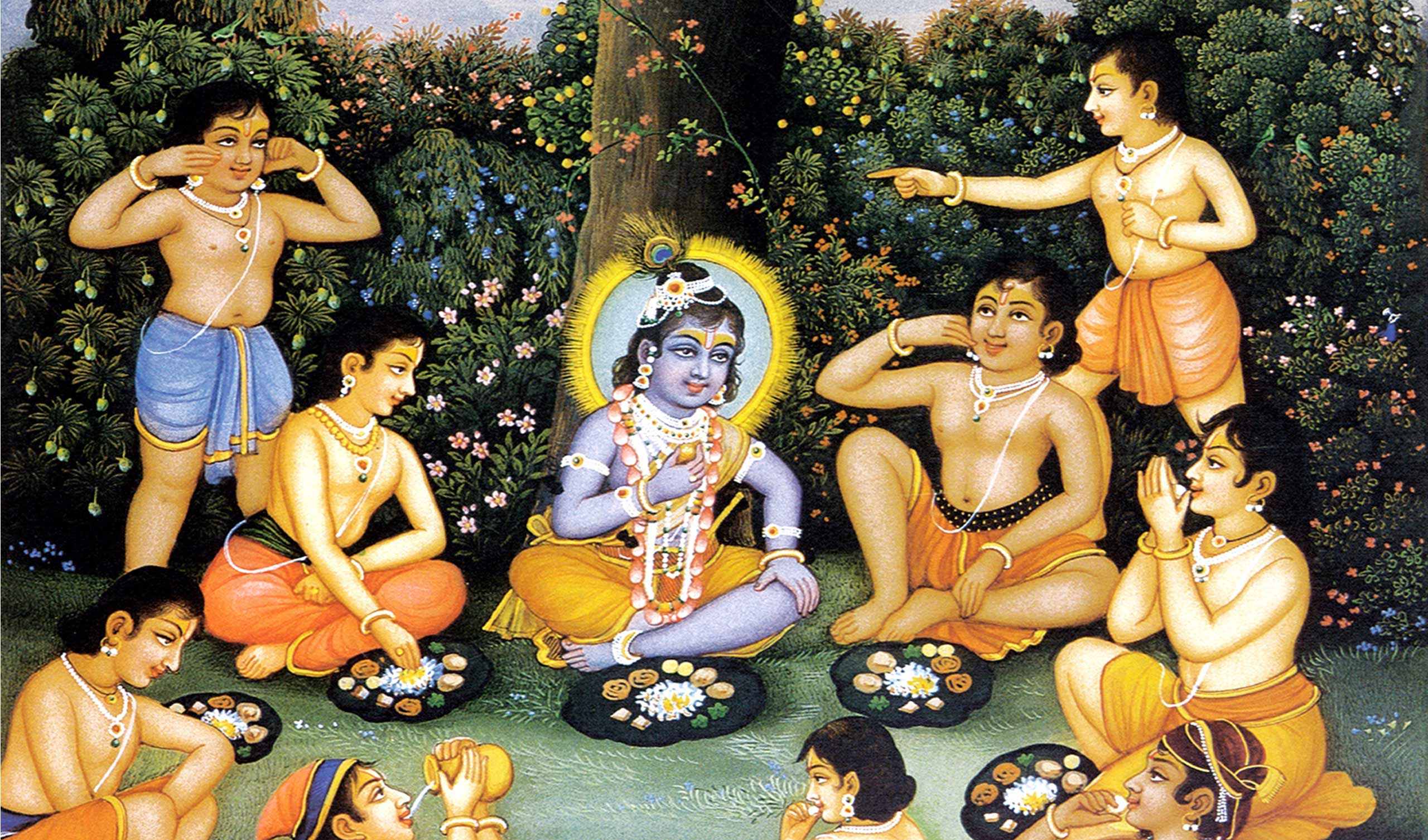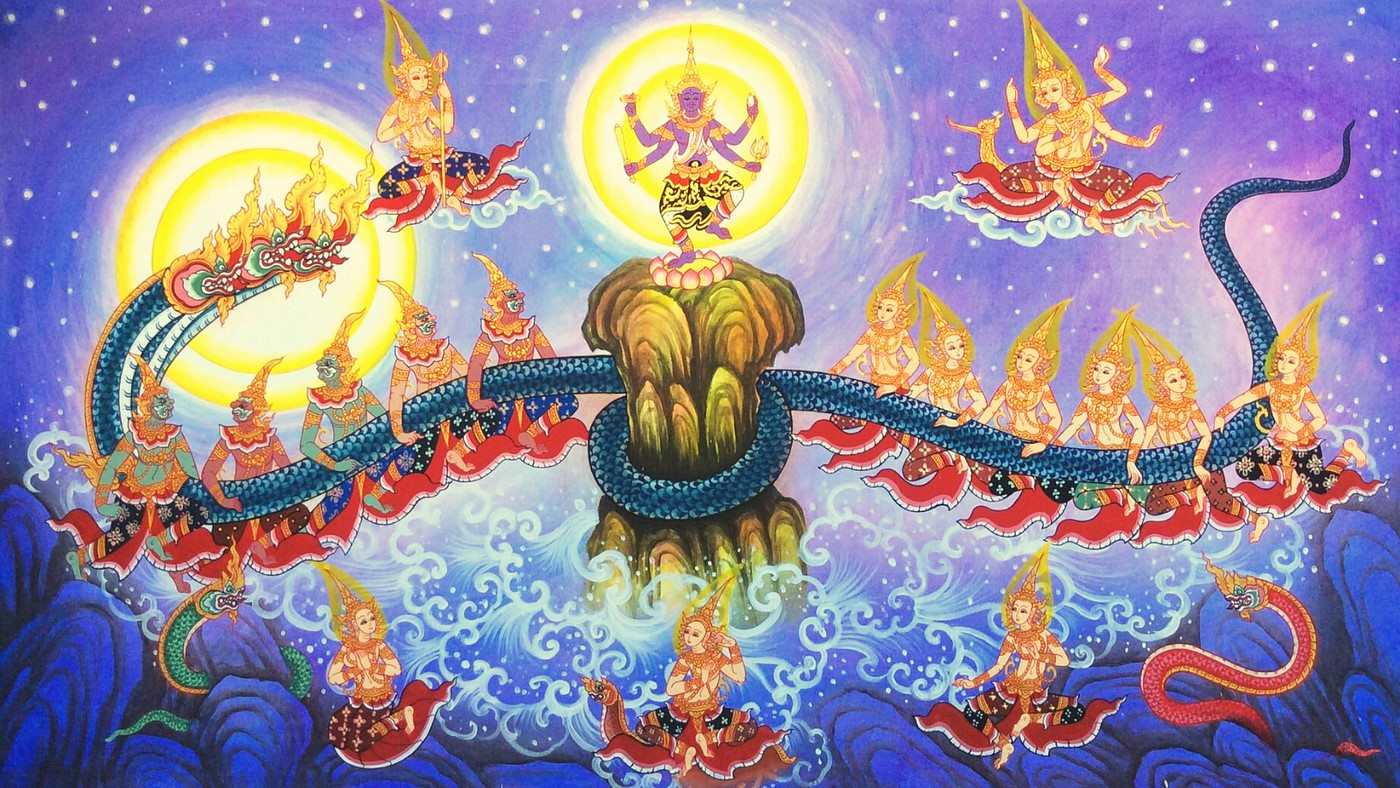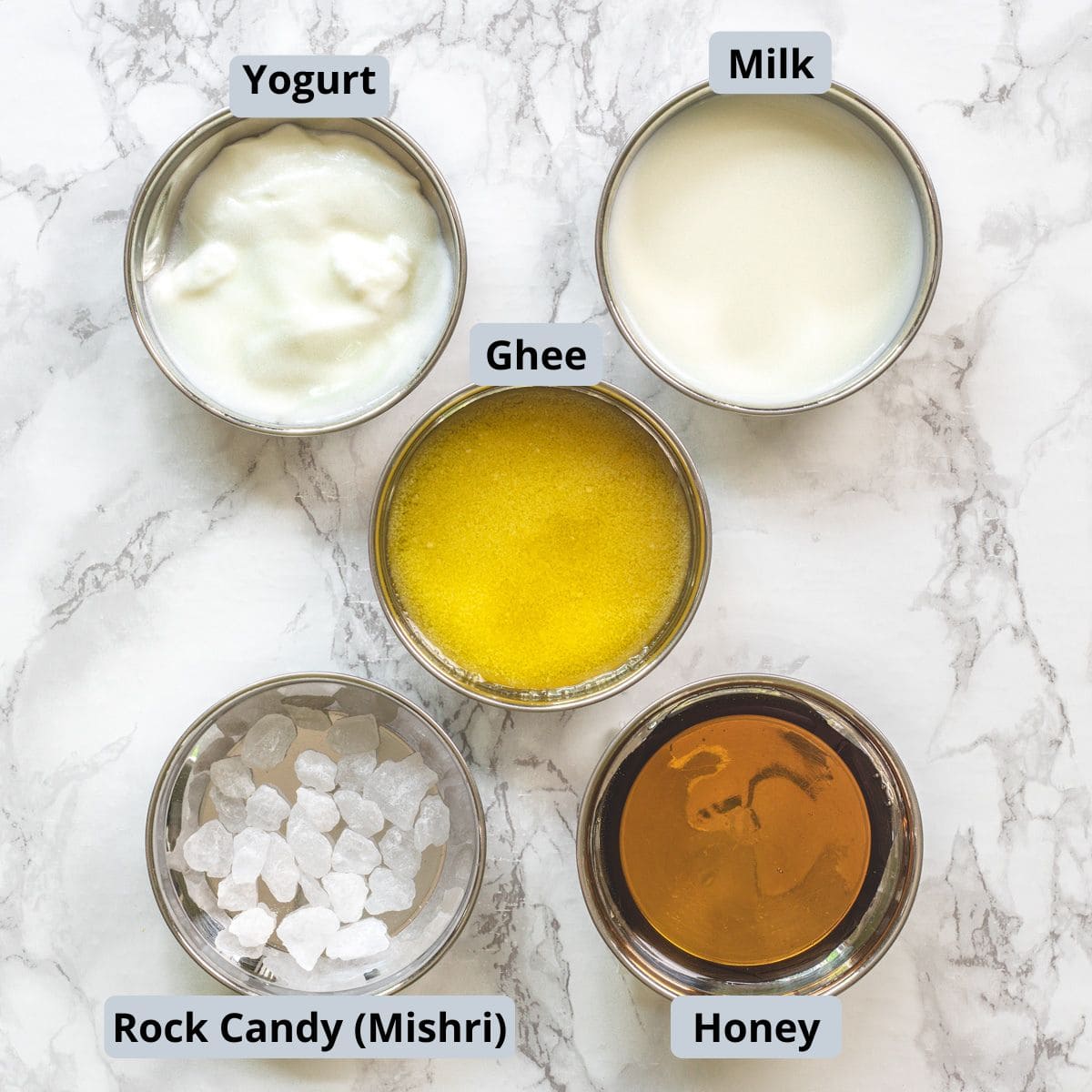Everything about Naivedhyam and Panchamrut
The timeless relevance of our religion, Hinduism is that the fundamental principles of spirituality are holistically enmeshed in simple, easy to practice and very scientific rituals that serve continuously to enrich the mind, body, and soul.
These practices are so convenient to integrate into one’s lifestyle that personal upliftment is very effortless and gradual but at the same time, it is sustainable and long-lasting.
Man has always found numerous ways of expressing his love and adoration towards the Lord. Man in his limited resourcefulness has used music, literary enterprise, sculpture, culinary efforts, and art of all kinds to depict different aspects of Divine Benevolence and Grace as well as his servitude.
Hence, for the student of Hinduism, it is a singularly enriching experience to recognize that the all-encompassing superiority of Hinduism presents the “Prasadam” or “Naivedhyam” or culinary offering in a Pooja or worship ritual as a consortium of nutritionally rich components which safeguard the health of the devotee as he strives to make himself one with the Creator.
Naivedhyam
It is a Sanskrit word meaning ‘offering to God’ in the stricter sense of the word. It could be any offering, tangible or intangible. A resolution, a promise, or even a willingness to do, perform a service, or restrict oneself from certain things can also be connoted as an offering to God.
Naivedhyam means a food offering to the Lord as part of a worship ritual, before eating it. As such, tasting during preparation or eating the food before offering it to God is forbidden. The food is placed before a deity and pujas are offered. Then the food is consumed as a holy offering (Prasadam).
The offerings may include cooked food, sugarcane, fruits, etc. whatever we have. Recognition, acknowledgment, and adoration of our Lord, the prayers we offer to Him, and our wishes are all aspects of the manifestation of our unreserved faith in Him and our untiring belief in His Greatness and hence an offering to God is an extension of this belief.

However, one needs to differentiate Naivedhyam from ‘Prasadam’. Prasadam is actually what one gets from God. This is usually attributed to food which we invariably offer to and receive from the house of Gods in the form of eatables.
It is the practice of the Hindus to offer Food to the Almighty before consuming the same. Then Water in a vessel (Pancha Patra) is taken and in a specially designed Spoon (Palli) and sprinkled around the Panchapatra three times with the chanting of these Mantras –
OM ….. Praanaaya swaahaa.. apaanaaya swaahaa….
Vyaanaaya swaahaa… Udaanaaya swaahaa…
Samaanaaya swaahaa.. Brahmane swaahaa
It is a very educative enterprise that we recognize the scientific significance of this very ritual of offering food to the Lord. We, as human beings, subsist on the things that we eat from the bounty of Nature.
The food offering to the Lord is our way of thanking Him. Interestingly, this is a Universal truth. Our Hindu Shastras declare that eating Food without first offering to the Lord, amounts to pilferage. Another reason is that food that is made of natural resources contains impurities, which nowadays also contain hazardous chemicals and pollutants.
Additionally, it is important to realize that the food we eat is the result of the laborious efforts of a lot of people who may not even have been adequately compensated for their toiling. When we offer Naivedyam, He takes away the impurities and the consequences born out of the anger and anguish of the producers.
The food then becomes amenable to our body and we gainfully move towards wellness and good health. After all, we are because of what we think and what we eat.
Panchamrut
Panchamrut (Devanagari from Sanskrit panchamruta), also spelled ‘Panchamrut’ is a mixture of five foods used in Hindu worship and puja, usually honey, sugar, milk, yogurt and ghee. Panchamrut is considered to be the nectar for offering to Gods on various religious occasions in Hindu culture. Panch – is five in Sanskrit and Amrut is nectar.
At the end of the Pooja, a little bit of panchamrut is offered to all who have attended the pooja as part of the Prasadam. Make sure to add one Tulsi leaf before offering to God. Appropriate quantities of Milk (only cow milk), Yogurt, Honey, Sugar and Ghee are mixed.
However, there may be certain regional variations in ingredients.
- Most South Indians add ripe bananas instead of sugar.
- In Palani Murugan temple (Arulmigu Dhandayuthapani Swamy Temple), Tamil Nadu, Panchamrut is used in abhisheka and distributed as prasad in huge quantities. The banana used here is the ‘Virupachi’ variety, specific to that location.
Panchamrut is an ayurvedic preparation until 1890, bananas were not used. It is used as an offering during poojas. It is used as a liberation during Abhishekam. It is also used as a skin cleanser and boosts immunity.
Five elements
According to Hindu mythology, the five elements of this sweet concoction have symbolic meaning. Milk represents purity, Yoghurt gives us strength, Honey depicts unity because it is prepared jointly by bees, sugar adds sweetness and Ghee is meant for nourishing the body.
Legend – Samudra Mathan
To study the origin of Panchamrut, the Story of ‘Samudra Mathan’ (Reference from the Mahabharata: Section XVIII of Astika Parva) should be studied. During the churning process, there emerged Dhanvanthri (Supposed to be known as the God of Ayurvedic Medicine) with a pot in his hand that contained the nectar.
The demons and devas were hassling with each other to get an opportunity just to sip the nectar pot and fly away with it. Rahu, one of the demons, somehow got hold of the nectar pot. The devas were terrified of the scene and sought the help of Lord Vishnu.
Lord Vishnu disguised himself as Mohini, who is said to be a very beautiful and elegant woman. She distracted the demons took away the nectar pot from them and gave it to the devas. The devas drank the nectar. Amidst this scene, Rahu disguised as one of the devas and drank the nectar as well. The switching of sides of Rahu was observed by the Sun and Moon Gods, and they informed Mohini about this.
Mohini wanted to kill Rahu before the nectar could pass through his throat. She cut off his neck with her Sudarshana Chakra (A Sharp blade-like wheel). But he had already swallowed the nectar and hence he did not die. His body was in two parts then, his head was called Rahu, and his body as Ketu. In the end, the devas who got back their powers defeated the demons, and remained immortals thereafter!
Churning of the Milky Ocean and Mohini Murti is narrated in detail in Bhagavat Purana, 8th Canto.

The primordial matter, Prakriti, consisting of three modes of nature (sattva, rajas, and tamas), generates four groups of five.
- The first group is elementary; earth, water, fire, air, and ether.
- The second group is tan-matra, the subtle sense of objects; sound, touch, form, taste, and smell.
- The third group is the five sense organs for acquiring knowledge; eyes, ears, nose, tongue, and skin.
- The fourth group is the five working senses; speech, hands, feet, anus, and genitals.
Panchamrut therefore stands for offering all material elements back to Sri Vishnu by bathing Him with milk, yogurt, ghee, jaggery, and honey, and thus engaging the mind, intellect, and self in a conscious practice of puja. Just like Ganga which springs from Sri Vishnu’s lotus feet, panchamrut becomes charanamruta and purifies internally and externally. It is a blessing for a spiritual elevation, individually and as a community.
Immortality comes from the contact with the source of everything, not from the compatibility of the elements themselves. Milk, yogurt, and ghee come from cows. They are pure and Sattvik, Jaggery, and honey increase their deliciousness.
Krishna is the protector and friend of cows. Therefore, any yajna is incomplete without milk products. Here we offer “milk to get peace of mind yogurt” “long life ghee” “gnana or tejassu honey” “good health sugar” good people and good thoughts around us. All religious Hindu Pooja and functions are incomplete without the Panchamrut prasadam.
Panchamrut or Charnamrut
It is a milk and curd diluted offering to the Gods and is considered auspicious and highly pleasing to the deities. “Panchamrut” or “Charnamrut” as it is popularly called is the 5 Nectars mixed, namely; Milk, Curd, Ghee (clarified butter), Honey, and Sugar. Some Tulsi or Holy Basil leaves or banana pieces are also put in it for a different taste.
All these 5 ingredients have lots of health benefits and when it is combined in the right quantity, the extremely nourishing Panchamrut is made. One can have Panchamrut even if one does not have any puja at home.
Benefits of Panchamrut
It has a lot of benefits which is why Panchamrut is also called food for God. * Panchamrut prepared with the right proportion is also considered to be a healthy recipe for brain function. * Good food for healthy hair.
Hence, the activity of offering Panchamrut is laden with Scientific reasons: The activity may be changed into sacrifice. This reminds us that food is not merely intended to appease our taste. This also purifies the food as this food is digested smoothly.
Mantra
The following mantras are recited before partaking in this divine blessing:
Brahmapanam Brahma havir brahmaagnou brahmanaayutham
Brahmaiva taena gantavyam Brahma karma samaadhina
The ladle is God, the oblation is god, and it is offered by God in the fire, which is God. God shall be attained by him who is absorbed in God as the act of such sacrifice.

